
November Newsletter
!NEWS!
Welcome to our November Newsletter
NEW EDITIONS JUST PUBLISHED
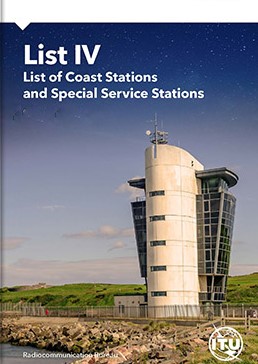
List of Coast Stations and Special Service Stations (List IV), 2025 Edition
List IV contains important information for the mariner in relation to radiocommunications, including the GMDSS (Global Maritime Distress and Safety System).
Detailed information such as the frequencies for transmitting and receiving, in addition to geographical coordinates, is provided for maritime coast radio stations, including those assuming watch-keeping using digital selective calling (DSC) techniques and radiotelephony. List IV also supplies details of additional services such as medical advice, navigational and meteorological warnings, MSI (Maritime Safety Information), AIS (Automatic Identification System), meteorological bulletins and radio time signals, along with the hours of service and operational frequencies, information on port stations, pilot stations, coast Earth stations, VTS stations, contact information of RCC (Rescue Coordination Centers), SAR agencies, Navarea coordinators and AtoNs (AIS Aids to Navigation).
As stipulated in Appendix 16 to the RR, this List shall be provided to all ship stations for which a Global Maritime Distress and Safety System (GMDSS) installation is required by international agreement.
RRP £320.00

Brown’s Nautical Almanac 2026 Edition
Completely revised each year and well known in every port throughout the world. Published annually in November for the following year.
The Almanac is arranged in to clear and concise sections for easy reference:
I. Astronomical Data.
II. Nautical Tables and Methods.
III. Tide Tables for Home and Foreign Waters.
IV. Coastal Courses and Distances around the British Isles.
V. Navigable Distance Tables giving a world-wide coverage of total distances from the principal ports of Britain, U.S.A. and Canada, to all important ports of the world.
VI. Maritime Information including Legal, Technical and General.
VII. Miscellaneous Information covering Stability, Buoyancy, Celestial, Sailings and Navigation. The Pilotage Information section has been revised to conform with notices issued by Admiralty, Hydrographic Authorities and Port Authorities.
Used round the world every day throughout the year.
RRP £74.00
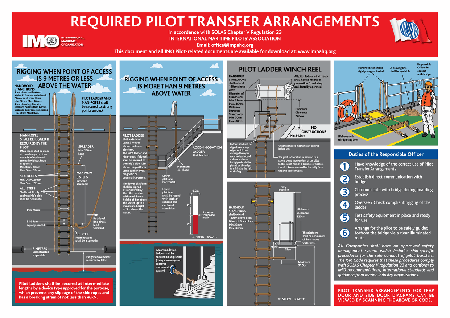
Required Boarding Arrangements for Pilot Poster
The poster reflects the requirements detailed in SOLAS Ch V, Reg 23 and the approved IMO circular MSC.1/Circ.1428/Rev.1.
The updated requirements were adopted by the IMO at its 110th MSC session on 25 June 2025 under IMO resolution MSC.576 (110). While the updated requirements do not enter into force until 1 January 2028, the voluntary early implementation of the updated amendments to SOLAS Ch V, Reg 23 and the use of this updated pilot boarding arrangements poster are strongly recommended under MSC.1/Circ.1690.
RRP £5.00

Ballast Water Management, Understanding the Retrofitting of BWM Systems from 2026, 16th Edition, Volumes 1-2
Since 8th September 2024, all ships to which the BWM Convention applies, have had to comply with the Convention’s ballast water discharge standard (D-2). For most ships, this has involved installing and operating a BWMS on board. This comprehensive, two-volume publication provides up-to-date guidance on BWM regulations, operations (including port State control (PSC) requirements) and equipment options. It is a valuable, single-point source of information for ship owners and operators.
In Volume 1, the publication looks in detail at the various treatment systems and technologies, significant components and the implications for onboard operation, maintenance and contingency measures. With the end of the installation window for fitting a BWMS to existing ships, there is a shift from retrofitting to installing on newbuilds and fulfilling maintenance contracts. However, retrofit experience remains an important consideration as there will also be a growing market for fully or partly replacing older (legacy) BWMS or systems that are not operating properly.
Now the BWM Convention has been fully in force for a year, there is an increase in PSC BWM inspection activity leading up to the end of the experience building phase (EBP) for the Convention in Autumn 2026. These PSC inspections aim to facilitate compliance by identifying deficiencies early and ensuring that ships are meeting the mandatory requirements of the Convention. There is particular emphasis on the D-2 performance standard, the provision of correct and accurate documentation for inspection and support for crew operating the systems on board.
Volume 2 provides an extensive set of data sheets on BWMS that have been type approved through the BWM Convention testing procedures. These summarise the treatment technology, type approval certification and system design limitations (SDL), so that ship owners can evaluate different systems and make an informed decision before purchasing. It is particularly important to know the SDL of a BWMS since these are the conditions and parameters under which the system is approved to operate.
The Appendices contain an updated list of IMO Guidance Documents for the BWM Convention (updated to MEPC 83). They also describe key invasive species and illustrate native and invasive geographic ranges.
RRP £375.00
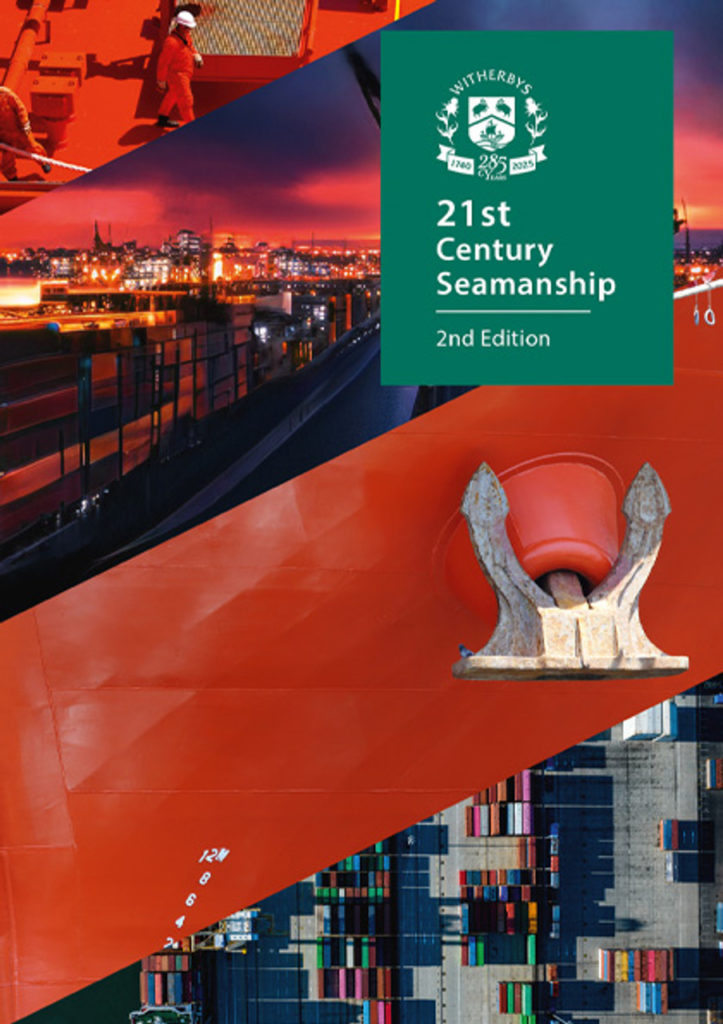
21st Century Seamanship, 2nd Edition
A career at sea or in any marine-related field demands a vast and evolving body of knowledge. Seafaring remains one of the most encyclopaedic professions, requiring not only practical skills such as navigation, ship handling and cargo operations but also a firm grasp of regulations, environmental responsibilities and safe methods of work.
Ten years in the making, this Second Edition of ’21st Century Seamanship’ has been comprehensively revised and expanded by Witherbys’ technical team to reflect the regulatory, environmental and technological changes that continue to shape the maritime industry. Traditional subjects such as wires, cranes and ropework remain at its core but new emphasis is placed on pollution prevention, energy efficiency and the regulatory frameworks of the last decade including the latest IMO Conventions and Codes.
Exceptionally broad in scope, this 1,300+ page manual covers ship types, handling, equipment, emergency response, onboard procedures, inspections and safety management. It is designed as both a study resource and a lifetime reference, offering seafarers at every level the awareness and understanding essential to safe, efficient and responsible ship operation. It continues the tradition of supporting mariners with practical knowledge adapted for today’s realities and tomorrow’s challenges.
RRP £75.00

Cyber Security Workbook For On Board Ship Use, 7th Edition 2026
Cyber risk management should be an inherent part of safety and security and should be considered at all levels of the company, including senior management ashore and onboard personnel.
This Workbook has been designed as a practical, straightforward guide to support the Master and officers on board ship (Part I – Onboard Practical Considerations). It is designed to facilitate understanding and good collaboration between individual ships, onshore IT departments and equipment manufacturers (Part II – Shore Management Considerations). The Workbook may also be useful to the wider maritime industry.
The seventh edition has been produced by Witherbys, BIMCO and the International Chamber of Shipping (ICS).
The Workbook has been fully revised and updated and contains new guidance on:
- Industry guidelines and regulatory requirements, including IACS UR E26 and E27
- cyber security in port
- passenger ships
- ship inspections and port state control
- software updates
- malware detection and prevention
- phishing risks.
Detailed case studies and diagrams have been added to help illustrate cyber risks. The Workbook contains 13 checklists and 6 annexes, including Cyber Security Risk Assessment and Creating a Cyber Security Plan.
RRP £295.00

Passage Planning Guide: English Channel, Dover Strait and Southern North Sea, 2026/27 Edition
This Passage Planning Guide provides up-to-date information for the safe and controlled transit of ships through the English Channel, Dover Strait and Southern North Sea. The 2026?27 edition has been fully revised and updated with input from serving Deep-Sea Pilots and industry organisations.
This Guide supports all stages of passage planning appraisal, planning, execution and monitoring and highlights aids to navigation, traffic separation schemes, reporting requirements and regional traffic patterns essential for a safe and effective transit. Recommended routes for NE-bound and SW-bound transits are illustrated on annotated, pull-out chartlets. The Guide covers passages to and from:
- MAAS/Rotterdam
- Sunk/Thames
- Wandelaar/Schelde
- Elbe/Weser/Jade.
New material in this edition reflects the evolving navigational and regulatory landscape of the region. Two additional hotspots have been included for the Jade/Weser region in response to the October 2023 collision between the Verity and the Polesie. Guidance for container ship operations in the Southern North Sea has been updated in line with the 2025 revisions to IMO circular SN.1/Circ.344. The sections on ferry and fishing vessel traffic have been expanded to give further information on the navigational and safety concerns involved with encountering them.
Practical advice is provided for Masters of arriving ships covering notification requirements and documentation, along with guidance for the Officer of the Watch and the bridge team tailored to the demands of the Channel, Strait and Southern North Sea environment. The Guide also examines ship reporting systems and small boat crossings, which are increasingly relevant to navigational safety.
Environmental compliance remains a core focus with updates addressing MARPOL and BWM obligations. In line with IMO Resolution A.1080(28), the Guide outlines the use of qualified and licensed Deep-Sea Pilots and provides contact details for recognised providers. Offshore renewable energy installations and associated navigational implications are also considered in detail. To support situational awareness and learning, the Guide incorporates case studies drawn from recent groundings and collisions in the region.
A companion publication, Useful Information for English Channel, Dover Strait and Southern North Sea, is freely available to download and includes QR code links to useful reference PDFs, details of pilot boarding stations for Cherbourg and Brixham, a Pre-entry Bridge Team Meeting checklist and incident reporting procedures.
RRP £325.00
FUTURE NEW EDITIONS

BIMCO Holiday Calendar 2026
This publication is the most trusted and unbiased source of worldwide holidays and working hours in the shipping industry. It is an essential reference when voyage planning and negotiating charter parties and to help avoid disputes with third parties.
The most significant improvements in this edition are:
- Increased focus on local and regional holidays
- exclusion of conditional and labour agreement holidays and greatly improved verification of entries supported by local, legal documentation to ensure reliability
- holiday legislation is reflected at national, regional and municipality level.
RRP £175.00

Crude Oil Tanker Basics, 2nd Edition
The second edition of this book has been revised and updated, covering topics ranging from the basics of crude oil chemistry to voyage fixing and record keeping. Fundamentals of cargo operations, such as calculating cargo quantities at loading and discharge, are explained in both theory and practice, with additional coverage of tank and line cleaning, stripping procedures and dealing with contingencies such as equipment failure. Practical examples and checklists are provided.
This new edition also includes expanded guidance on pumping systems, vapour emission control systems, segregated ballast systems, ballast water management arrangements and other current operational requirements for crude oil tankers. This ensures that readers are equipped with the knowledge required to perform operations fully and correctly using up-to-date methods and compliant procedures. The book is supported by many new illustrations, including photographs taken on board a new build VLCC.
RRP £95.00
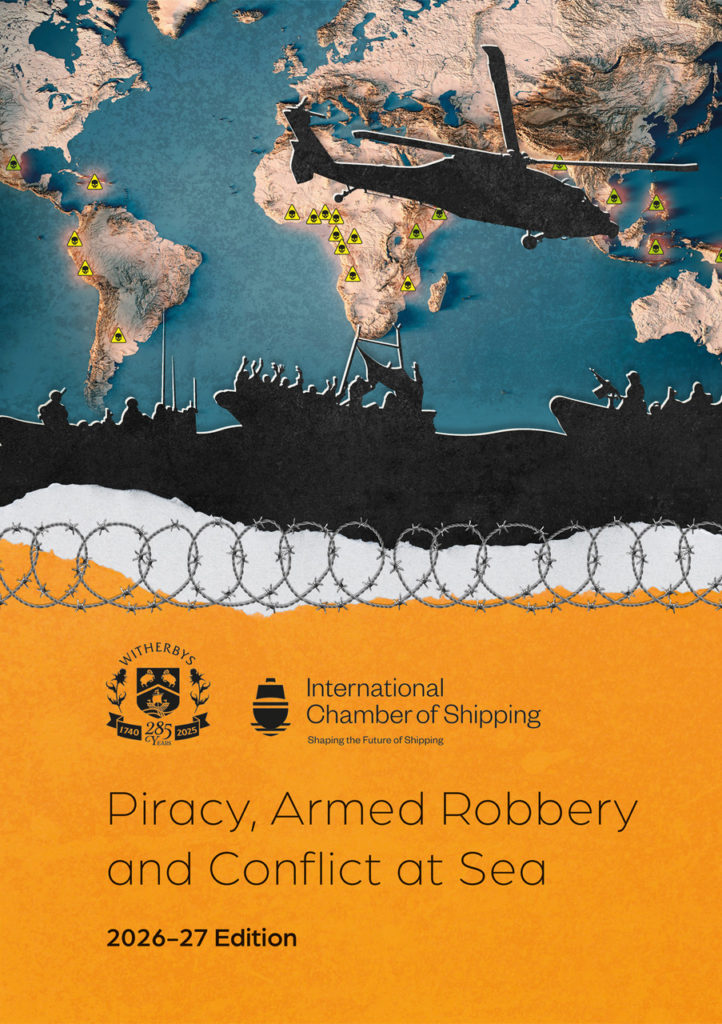
Piracy Armed Robbery and Conflict At Sea, 2026-27 Edition
The Guide provides a comprehensive overview of the measures seafarers should take to protect against, prevent, respond to and recover from an incident of piracy, armed robbery or conflict at sea.
Current threat profiles and up-to-date guidance are outlined, including the latest international and regional regulatory guidance to aid seafarers in understanding the complexities of security challenges at sea and for each individual voyage. This new edition features updated piracy statistics and case studies, expanded coverage of maritime terrorism and warzones/warlike areas and new subsections on GNSS/AIS jamming and spoofing.
The second edition details the security measures needed on board to protect against attacks as well as how to create and implement a successful ship security plan, as required by the ISPS Code. It includes a brand new section on security measures in ports and the latest updates on cyber security and associated training. International and national cooperation sections have been revised with new material covering United Nations, NATO, ASEAN and SAARC Conventions among others.
Advice for navigation and passage planning in areas of high risk is also given alongside details of training programmes that should be in place for crew and onshore staff. The response section has been updated with new case studies of CBRN and WBIED attacks along with new content on decontamination incident management.
This Guide also provides step-by-step advice to be followed in the event of an attack on board including ship damage mitigation measures, medical considerations, guidance for hostage situations and preparation and response to missile, mine and drone attacks. It also outlines considerations for the ship management team, such as responding to ransom requests and media management and communication.
Annexes provided include updated reporting forms and reference checklists for each stage of an incident (protect, prevent, respond and recover), as well as revised bridge cards summarising key information and risk areas.
RRP £195.00
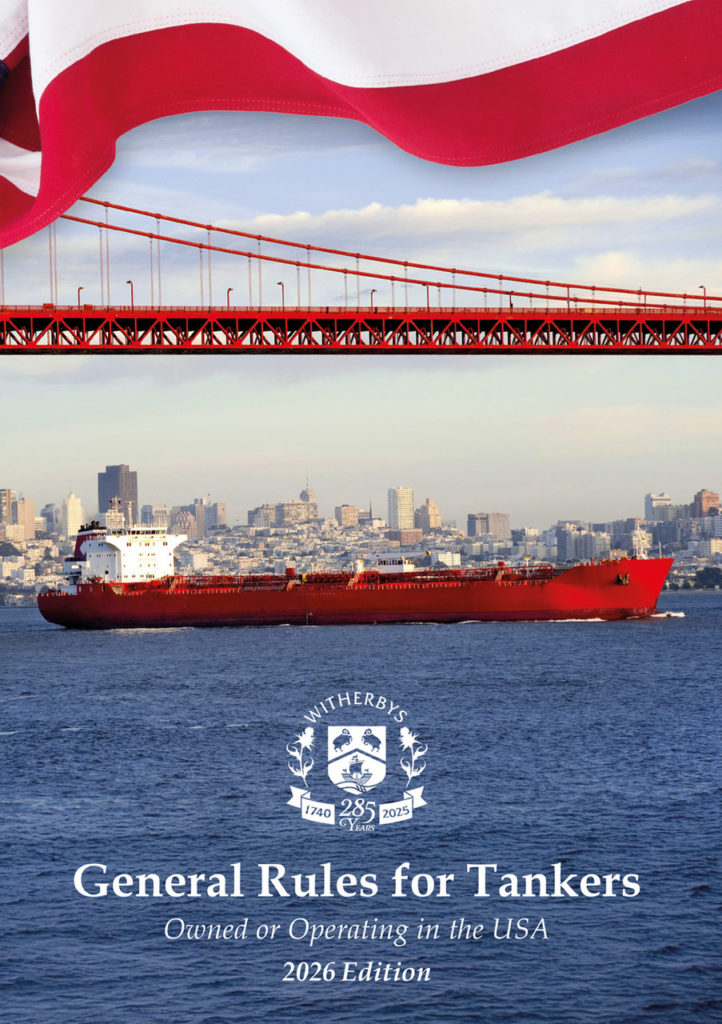
General Rules for Tankers Owned or Operating in the USA, 2026 Edition
The new edition, comprised of the latest available US Federal regulations at the time of compilation, has been expanded and revised to incorporate recent regulatory updates, including:
- Oil Cargoes
- Gas Cargoes and Liquefied Flammable Gases
- Noxious Liquid Substances
- Control of Pollution and Hazardous Substances, including Financial Liabilities
- Chemicals, Marine Pollutants, Dangerous Goods and Hazards
- Ballast Water Management Requirements
- Marine Casualties and Inspections
- Maritime Security Requirements
- Recordkeeping Requirements
- Rules for the Safe Operation of Tankers including Navigation Rules
- Life-Saving Appliances and Fire-Fighting Equipment
- Workplace Safety and Health
- Mandatory Greenhouse Gas Reporting Requirements
- Vessel Inspection Alternatives
- Tanker Design, Construction and Ship Stability
- Port and Terminal Operations.
RRP £350.00

Suggested Minimum Content for LNG Carriers Training Courses Management Level, 1st Edition
This document supports the development of management-level training courses for LNG cargo operations, based on LNG Shipping Suggested Competency Standards. It provides guidance for training providers, ship owners and operators on designing and delivering training for cargo equipment management and deck management-level officers, as well as those preparing for promotion to these ranks.
While attendance at such courses ensures participants receive essential knowledge and understanding, full competence requires additional training and onboard experience beyond the scope of this document. The document excludes floating, storage and regasification units and emphasises the importance of regularly reviewing and updating training standards to maintain their safety function.
RRP £150.00

Australia and New Zealand Biofouling, 1st Edition
This first edition details the regulatory frameworks governing the management of biofouling on ships operating in Australian and New Zealand waters. Australia’s layered federal and state regulatory systems combined with diverse port ownership structures present significant compliance challenges for shipowners, operators and agents. New Zealand’s 2023 Craft Risk Management Standard (CRMS) for Vessels is the strictest biofouling management regime in the world, backed by rigorous enforcement and the potential for substantial penalties for non-compliance.
The publication also examines the AFS Convention, port entry requirements, penalties for non-compliance and the impact of biofouling on ship hydrodynamics and operating costs. It provides practical guidance on ship inspection and cleaning, supported by a comprehensive set of data sheets for in-water hull cleaning companies, including location maps. The appendices provide a set of official checklists for in-water cleaning, the MPI Vessel Checklist and Reporting Form, the MPI Biosecurity Pre-Arrival Report, and commentary on the 2023 Biofouling Guidelines.
This is an essential guide for maritime professionals operating in or entering Australian and New Zealand waters, providing clear insight into compliance obligations and effective preparation for port entry, helping to minimise disruption, delays and unexpected costs.
RRP £95.00

Ships’ Routeing 2025 Edition – HARDBACK VERSION
Both the safety of shipping and the cleanliness of oceans are promoted in many ways, one of which is the continuing development of routeing measures to organize the navigation of vessels and to monitor their progress. This publication presents individual descriptions of the following routeing measures:
- traffic separation schemes and inshore traffic zones;
- deep-water routes;
- areas to be avoided;
- no anchoring areas;
- other routeing measures, such as recommended tracks, two-way routes and recommended directions of traffic flow;
- associated rules and recommendations on navigation;
- archipelagic sea lanes; and · ship reporting systems.
This edition incorporates routeing measures that have been adopted before September 2025.
RRP £195.00

